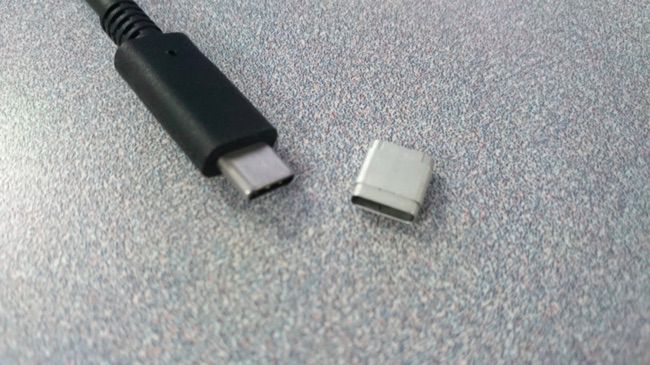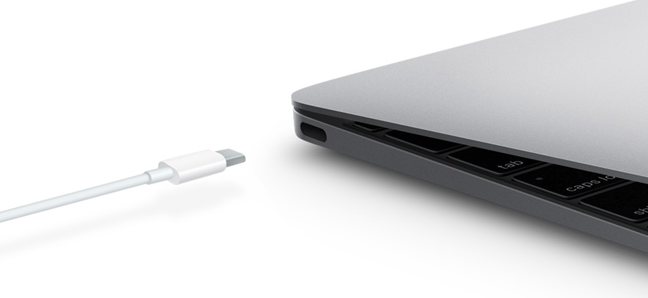USB Type-C Explained: What It Is and Why You’ll Want it Edited by anky17cool at 2016-03-26 11:45
Apple’s new MacBook has a single USB Type-C port, but this isn’t an Apple-only standard. This is a new USB standard, and — given time — it’ll spread to everything that currently uses an older, larger USB connector. USB Type-C is closely intertwined with other new standards, like USB 3.1 for faster speeds and USB Power Delivery for improved power-delivery over USB connections. Type-C is a New Connector Shape USB Type-C is a new, tiny physical connector. The connector itself can support various exciting new USB standard like USB 3.1 and USB power delivery (USB PD). The standard USB connector you’re most familiar with is USB Type-A. Even as we’ve moved from USB 1 to USB 2 and on to modern USB 3 devices, that connector has stayed the same. It’s as massive as ever, and it only plugs in one way — so you have to make sure it’s oriented correctly when you plug it in. But other devices wanted to use USB, too! Those massive USB ports won’t fit on smartphones, digital cameras, game controllers, and all the other devices out there you might want to plug in via USB. So many other shapes of connector were born, including “micro” and “mini” connectors. This collection of differently shaped connectors for different-size devices is coming to a close. USB Type-C is a new connector standard that’s very small. It’s about a third the size of an old USB Type-A plug. This is a single connector standard that every device should be able to use. You’ll just need a single cable, whether you’re connecting an external hard drive to your laptop or charging your smartphone from a USB charger. That one tiny connector can be small and fit into a mobile device, or be the powerful port you use to connect all the peripherals to your laptop. The cable itself has USB Type-C connectors at both ends — it’s all one connector. Yes, this is many awesome things at once. Not only is it reversible, it’s a single USB connector shape all devices should adopt. No more messes of different USB cables with different connector shapes for all the various devices you want, and no more massive ports taking up an unnecessary amount of room on ever-thinner devices. USB Type-C ports can support a variety of different protocols using “alternate modes,” which allows you to have adapters that can output HDMI, VGA, DisplayPort, or other types of connections from that single USB port, for example. Apple’s USB-C Digital Multiport Adapterlooks like a good example of this in action, offering an adapter that allows you to connect an HDMI or VGA output, larger USB Type-A connector, and smaller USB Type-C connector via a single port. The mess of USB, HDMI, DisplayPort, VGA, and power ports on typical laptops can be streamlined into a single type of port. USB Power Delivery The USB PD specification is also closely intertwined with USB Type-C. Currently, smartphones, tablets, and other mobile devices often use a USB connection to charge. A USB 2.0 connection provides up to 2.5 watts of power — that’ll charge your phone, but that’s about it. A laptop might require up to 60 watts, for example. The USB Power Delivery specification ups this power delivery to 100 watts. It’s bi-directional, so a device can either send or receive power. And this power can be transferred at the same time the device is transmitting data across the connection.Apple’s new MacBook and Google’s new Chromebook Pixel both use their USB Type-C ports as their charging ports. This could spell the end of all those proprietary laptop charging cables, with everything charging via a standard USB connection. You could charge your laptop from one of those portable battery packs you charge your smartphones and other portable devices from today. You could plug your laptop into an external display connected to a power cable, and that external display would charge your laptop as you used it as an external display — all via the one little USB Type-C connection. To use this, the device and the cable have to support USB Power Delivery. Just having a USB Type-C connection doesn’t necessarily mean they do. USB Type-C and USB 3.1 USB 3.1 is a new USB standard. USB 3‘s theoretical bandwidth is 5 Gbps, while USB 3.1’s is 10 Gbps. That’s double the bandwidth, as fast as a first-generation Thunderbolt connector. USB Type-C isn’t the same thing as USB 3.1. USB Type-C is just a connector shape, and the underlying technology could just be USB 2 or USB 3.0. In fact, Nokia’s N1 Android tablet uses a USB Type-C connector, but underneath it’s all USB 2.0 — not even USB 3.0. However, these technologies are closely related. The physical USB Type-C connector isn’t backwards compatible, but the underlying USB standard is. You can’t plug older USB devices into a modern, tiny USB Type-C port, nor can you connect a USB Type-C connector into an older, larger USB port. But that doesn’t mean you have to discard all your old peripherals. USB 3.1 is still backwards-compatible with older versions of USB, so you just need a physical adapter with a USB Type-C connector on one and and a larger, older-style USB port on the other. You can then plug your older devices directly into a USB Type-C port. Realistically, many computers will have both USB Type-C ports and larger USB Type-A ports for the immediate future — like Google’s Chromebook Pixel. You’ll be able to slowly transition from your old devices, getting new peripherals with USB Type-C connectors. Even if you get a computer with only USB Type-C ports, like Apple’s new MacBook, adapters and hubs will fill the gap. USB Type-C is a worthy upgrade. It’s making waves on the new MacBook, but it’s not an Apple-only technology and it will shortly be appearing in devices from practically everyone. Whatever you think of Apple, this time around they’re pushing hard behind a new standard that everyone can adopt. USB Type-C may even replace the Lightning connector on Apple’s iPhones and iPads one day — Lightning doesn’t have many advantages over USB Type-C besides being a proprietary standard Apple can charge licensing fees for.
| |
|
|
|
|
Good article... Hope the new M3 Note gets the USB type C connector...
| |
brian_rodrigues replied at 2016-03-25 15:31 Yeah, Hoping too! If M3 Note has a USB-Type C connector than it will the first among the budget segment! | |
|
|
|
|
USB C will be the next standard... Good compilation
| |
|
|
|
brian_rodrigues replied at 2016-03-25 15:31 Yes very much hoping for that.. Want USB Type-C for all the upcoming devices | |
|
|
|
Rudraksh replied at 2016-03-25 17:51 It won't be the first.. Letv 1s already has the USB Type-C | |
|
|
|
Pulak replied at 2016-03-25 18:29 No doubt about that.. New smartphones should come up with USB Type-C only.. To get it over the micro usb port | |
|
|
|
|
nice share..But main prblm so costly type c usb also not available..i know only letv and one plus currently use this..When Quantum and other third party brand start production of type c then cost reduce...
| |
|
|
|
|
Does Meizu pro5 has a USB type C with USB 3.1? or it's USB 3, 2?
| |
|
|
|
ark45 replied at 2016-03-27 01:02 Yes it will happen.. Usb type C will turn cheap like the micro usb.. As tym passes by | |
|
|
|




















































14